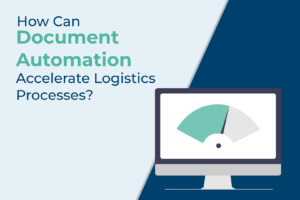Procurement has become an essential part of any business’ operational efficiency, no matter the size. Ideally, this process will involve direct visibility into the entire lifecycle of a transaction, from vendor selection to final invoice generation and payments with adjustments. In today’s business climate, a procurement plan is indispensable for any thriving organization. Successful procurement planning can define clear purchasing, place a company above their competitors, and identify anticipated goods and services for potential purchase, thus generating expected costs.
Automation stands to make procurement far easier, saving you both time and money. Adopting procurement automation is the need of the hour and should be on top of every company’s priority list as it provides clear visibility in organization-wide spend and tight control of all procurement activities, including alleviating manual errors, streamlining sourcing, maintaining supplier relationships, and controlling spend analysis.
A study by Information Services Group (ISG) said Robotic Process Automation (RPA) allows for a “43% reduction in resources for order-to-cash processes including billing, credit, collections, and pricing”. This shouldn’t be too surprising: after all, automation is undoubtedly useful for simplifying day to day tasks and this statistic shows just how much value technology can bring to your procurement functions.
Need some more reasons to automate procurement? Doing so can allow your organization to:
- Expedite the procurement process as a whole
- Eliminate cumbersome manual steps
- Save time
- Provide perfect visibility into historical spend
- Create a consolidated view of actual expenses for well-informed purchasing decisions
- Reduce costs on a continuous basis while identifying gaps
Moreover, automation can streamline supply chain management by providing a clear line of disclosure and transparency between you and each supplier. With an automated and more responsive system, suppliers can quickly respond to bids and buyers can assign an order to the best quote available to them. The whole process is available to all parties involved, thereby ensuring optimal costs and allowing for any issues to be resolved quickly.
Finally, automating procurement maintains a central repository for contracts which is accessible through a single click. It helps you onboard new suppliers quickly and makes sure all critical guidelines remain consistent across contracts. This allows for flexibility as your supply chain grows and changes with your business.
Altogether, automation ensures that all stakeholders have more time to do their strategic work and obtain necessary information without having to navigate through multiple systems. It empowers your company for better decisionmaking, increases efficiency, and provides absolute control over the procurement cycle, making your firm more productive. Minimizing risks, saving money, and eliminating waste: it’s all possible with automation.By: Vijeta Shetty, Documentation and Communication Manager, Symtrax Ria Baid, Business Analyst, Symtrax Sia Baid, Business Analyst, Symtrax Compleo Suite can help automate time-consuming tasks for a better workflow. Watch our demo here to learn how automating data entry can lead to better document management.


